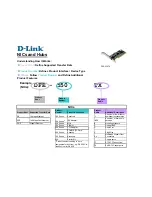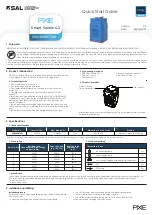
1-5
A switch does not forward an MLD report through a non-router port. This is because if the switch
forwards a report message through a member port, all the attached hosts listening to the reported IPv6
multicast address will suppress their own reports upon receiving this report according to the MLD report
suppression mechanism for hosts, and this will prevent the switch from knowing whether the reported
multicast group still has active members attached to that port.
For the MLD report suppression mechanism of hosts, refer to
MLD Configuration
in the
IP Multicast
volume
.
Done messages
When a host leaves an IPv6 multicast group, the host sends an MLD done message to the multicast
router.
When the switch receives an MLD done message on a dynamic member port, the switch first checks
whether a forwarding table entry for the IPv6 multicast group address in the message exists, and, if one
exists, whether the outgoing port list contains the port.
z
If the forwarding table entry does not exist or if the outgoing port list does not contain the port, the
switch discards the MLD done message instead of forwarding it to any port.
z
If the forwarding table entry exists and the outgoing port list contains the port, the switch forwards
the MLD done message to all router ports in the native VLAN. Because the switch does not know
whether any other hosts attached to the port are still listening to that IPv6 multicast group address,
the switch does not immediately remove the port from the outgoing port list of the forwarding table
entry for that group; instead, it resets the aging timer for the port.
Upon receiving an MLD done message from a host, the MLD querier resolves the IPv6 multicast group
address in the message and sends an MLD multicast-address-specific query to that IPv6 multicast
group address through the port that received the MLD done message. Upon receiving the MLD
multicast-address-specific query, the switch forwards it through all the router ports in the VLAN and all
member ports for that IPv6 multicast group, and performs the following to the receiving port:
z
If any MLD report in response to the MLD multicast-address-specific query is received on the port
(suppose it is a dynamic member port) before its aging timer expires, this means that some host
attached to the port is receiving or expecting to receive IPv6 multicast data for that IPv6 multicast
group. The switch resets the aging timer for the port.
z
If no MLD report in response to the MLD multicast-address-specific query is received on the port
before its aging timer expires, this means that no hosts attached to the port are still listening to that
IPv6 multicast group address. The switch removes the port from the outgoing port list of the
forwarding table entry for that IPv6 multicast group when the aging timer expires.
Содержание S7906E - Switch
Страница 82: ...1 4 DeviceA interface tunnel 1 DeviceA Tunnel1 service loopback group 1...
Страница 200: ...1 11 DeviceB display vlan dynamic No dynamic vlans exist...
Страница 494: ...ii Displaying and Maintaining Tunneling Configuration 1 45 Troubleshooting Tunneling Configuration 1 45...
Страница 598: ...ii...
Страница 1757: ...4 9...
Страница 1770: ...6 4...
Страница 2017: ...2 11 Figure 2 3 SFTP client interface...
Страница 2062: ...i Table of Contents 1 URPF Configuration 1 1 URPF Overview 1 1 What is URPF 1 1 How URPF Works 1 1 Configuring URPF 1 2...
Страница 2238: ...1 16 DeviceA cfd linktrace service instance 1 mep 1001 target mep 4002...
Страница 2442: ...2 4 Set the interval for sending Syslog or trap messages to 20 seconds Device mac address information interval 20...
















































